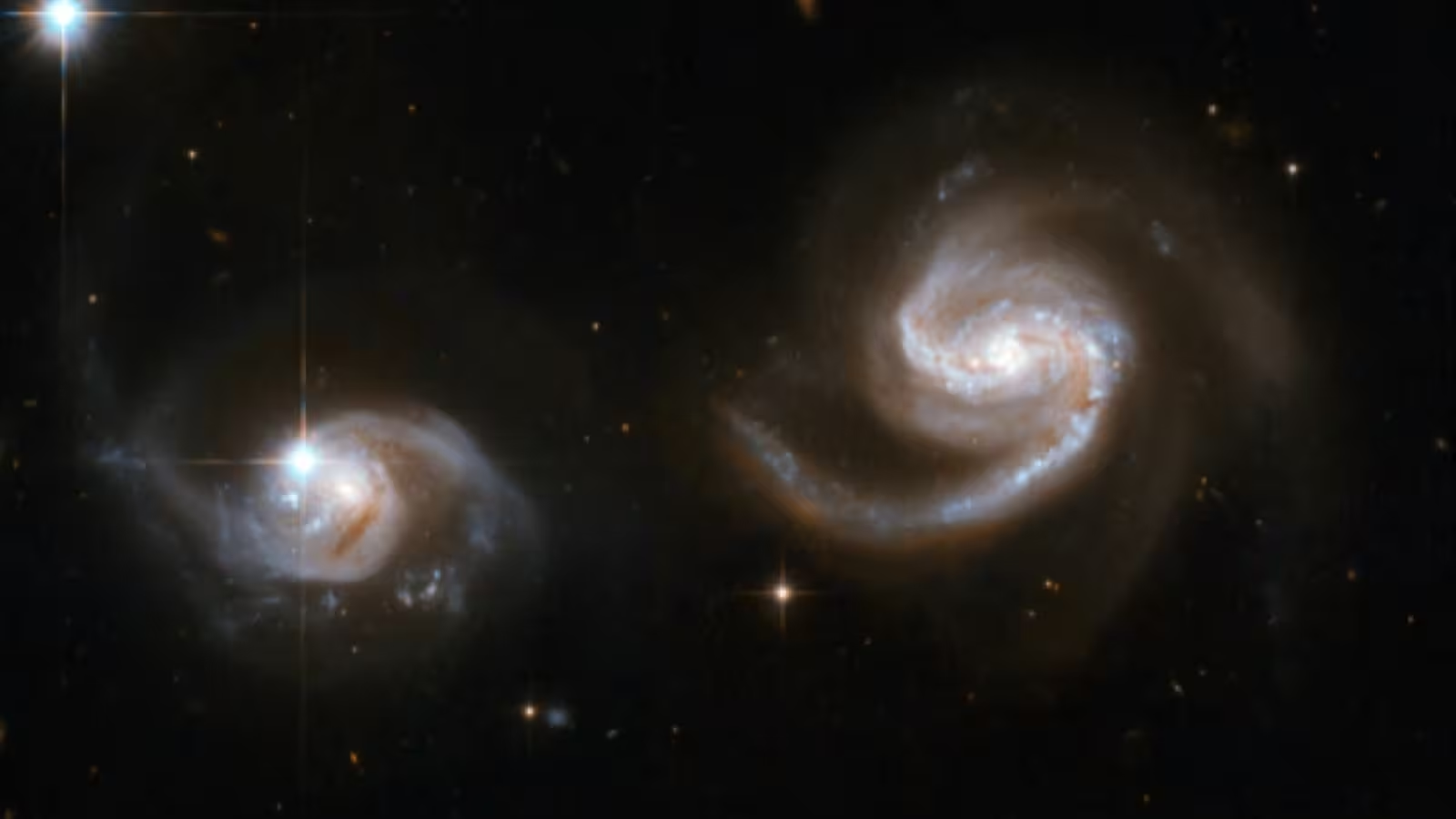4 Minutes
Rethinking the Fate of the Milky Way and Andromeda Galaxies
For over a century, astronomers have widely accepted that the Milky Way galaxy is destined to collide with its nearest large neighbor, the Andromeda galaxy (M31), within the next five billion years. This dramatic event, thought to lead to the merger of both spiral galaxies into a single, larger elliptical galaxy, has been a cornerstone of cosmic predictions and science education. However, new research published in Nature Astronomy offers a significantly revised outlook, suggesting a much less certain outcome for the future of these galaxies.
The Local Group and the Complexity of Cosmic Predictions
Both the Milky Way and Andromeda galaxies are central members of the Local Group—a vast collection of over 50 galaxies bound by gravity, including many smaller galaxies and a substantial halo of dark matter. According to the standard cosmological model, the histories of both Milky Way and Andromeda are already marked by traces of previous mergers and gravitational interactions.
Understanding Galactic Dynamics
Predicting future collisions between galaxies is an incredibly complex task. It requires precise knowledge not only of their positions and trajectories but also their masses and the influence of gravitational forces. A critical factor in such forecasts is dynamical friction—a process that slows galaxies over time and can cause their orbits to gradually converge. Accounting for this, along with variations in velocities and mass distributions, is key to modeling future interactions.
Advanced Simulations Inform a New Perspective
The recent study harnessed the power of both the Hubble Space Telescope and ESA’s Gaia space observatory. Scientists combined these datasets to perform 100,000 Monte Carlo computer simulations encompassing not just the Milky Way and Andromeda, but the entire Local Group system. This comprehensive approach revealed a surprising result: there is only about a 50 percent probability that the Milky Way and Andromeda will merge over the next 10 billion years. This is a significant departure from the previously assumed near-certainty of a collision.
Moreover, the likelihood of the two galaxies colliding within the next 4–5 billion years is now estimated at just 2 percent. As the study authors state, "Based on the best available data, the fate of our galaxy is still completely open."

Influence of Other Galaxies: M33 and the Large Magellanic Cloud
One reason for this unexpected result is the influence of additional nearby galaxies within the Local Group, namely M33 (also known as the Triangulum Galaxy) and the Large Magellanic Cloud (LMC). The gravitational pull of M33, a satellite of Andromeda, increases the chances of a Milky Way-Andromeda collision. In contrast, the LMC exerts a force at a right angle to the Milky Way-Andromeda orbital plane, which could deflect the Milky Way away from a head-on merger.
Co-author Dr. Till Sawala of the University of Helsinki explained: "The Milky Way and Andromeda alone would remain in the same plane as they orbit each other, but this doesn't mean they need to crash. They could still go past each other. The extra mass of Andromeda’s satellite galaxy M33 pulls the Milky Way a little bit more towards it. However, we also show that the LMC pulls the Milky Way off the orbital plane and away from Andromeda. It doesn't mean that the LMC will save us from that merger, but it makes it a bit less likely."
The Path Forward: Uncertainty Remains
While this study fundamentally shifts our understanding of the Milky Way’s future, it does not provide definitive answers. The researchers emphasize the need for further observations and more refined data to clarify whether a collision is truly inevitable. "It's somewhat ironic that, despite the addition of more precise Hubble data taken in recent years, we are now less certain about the outcome of a potential collision," Sawala noted. "That's because of the more complex analysis and because we consider it a more complete system. But the only way to get to a new prediction about the eventual fate of the Milky Way will be with even better data."
Conclusion
The long-held view that the Milky Way and Andromeda galaxies are on an unavoidable collision course is now in question. With a newly calculated 50/50 probability—based on advanced computer simulations and data from leading space observatories—astronomy textbooks may one day require an update. For now, the final destiny of our galaxy hangs in the balance, reminding us that even with cutting-edge technology, the universe still holds many uncertainties.
Source: nature



Comments